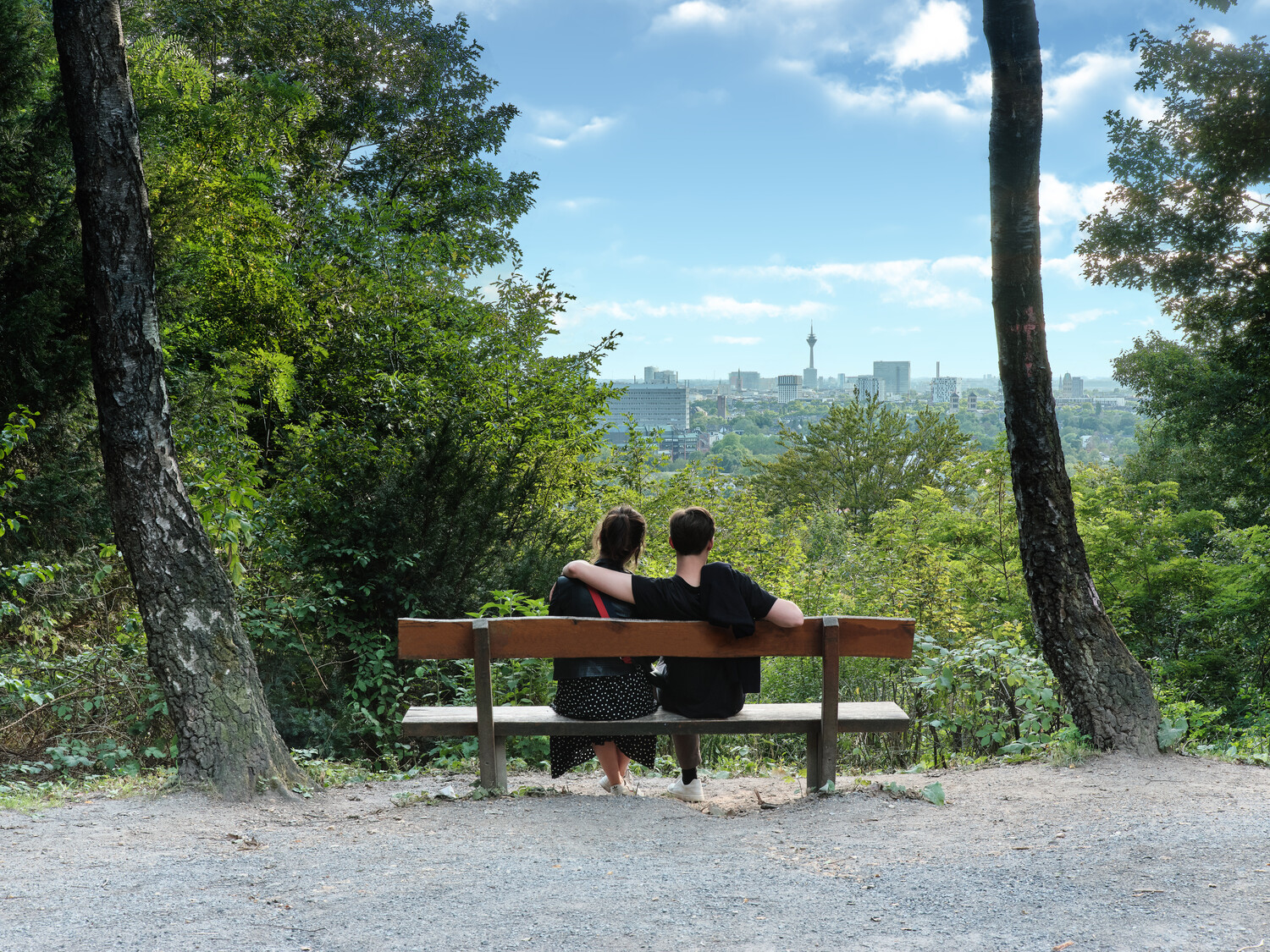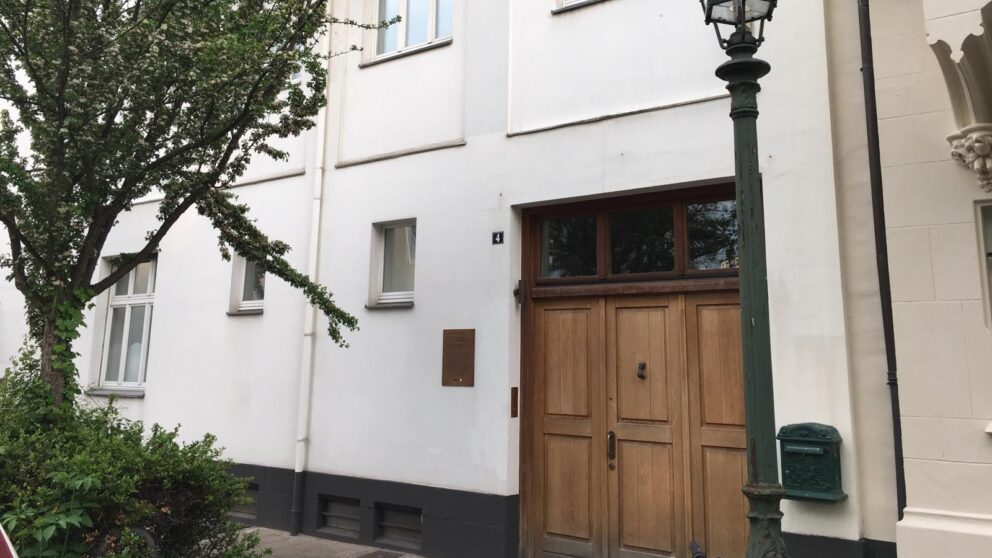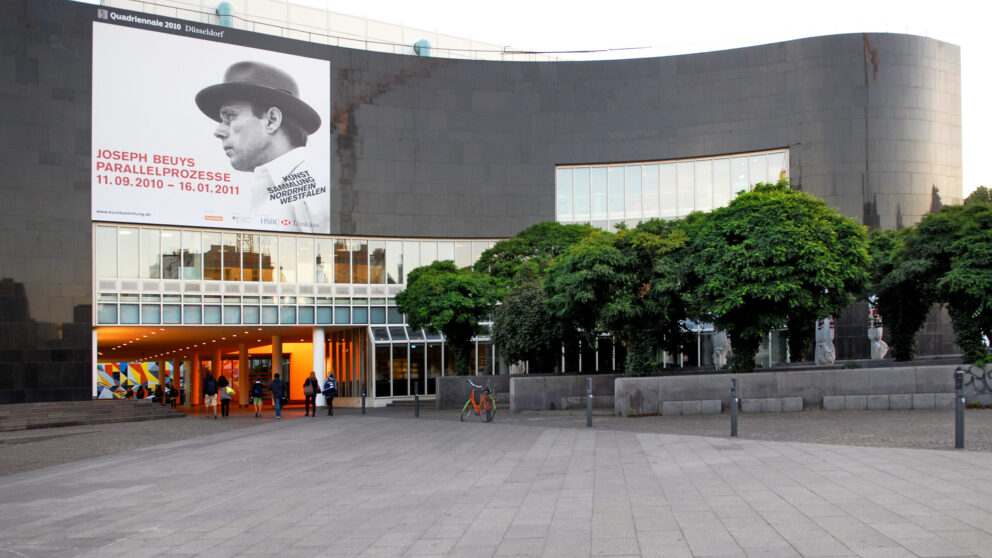
Forest bathing in Düsseldorf

Forest bathing in Düsseldorf
Dive into nature!
Do you get that feeling now and then, that urge to break free from the daily grind? To simply let go and give mind and body a little rest? You are far from alone in that wish, but being alone is often precisely what is needed to be able to relax. One of the best ways to achieve both is the practice of forest bathing. Forest bathing?! Not heard of it? This new favourite pastime of city-dwellers looking for peace and quiet originates from a stress management method rooted in Japan. In 1982, the government forestry agency in Japan began promoting shinrin-yoku to encourage stressed-out city folk to reconnect with nature by taking a walk – ‘bathing’ – in a forest.
And what makes forest bathing different from your average Sunday stroll? The intensity, and the length of time it takes. In forest bathing, you immerse yourself in the rustling of the leaves, walk barefoot over carpets of leaves, take time to feel the tree bark, consciously fill your lungs with pure, fresh oxygen-rich forest air. And because, ideally, you will lose track of time, a real, full-on forest bath can easily take four hours.
So, where are the best places in and around Düsseldorf to recharge your batteries Japanese style? Let us tell you about three beautiful forests where you can fully immerse yourself in nature.
Eller Forst
Forest bathing steeped in history. In the south-east of the city, nestled between the districts of Eller, Vennhausen and Unterbach, lies Eller Forst, Düsseldorf’s oldest nature conservation area. Back in 1935, parts of the area were given over to the Eller Forst bird sanctuary. Today, the nature conservation area extends across 95 hectares, that’s almost a square kilometre of land. You will be hard pushed to find a more diverse forest than this one in Düsseldorf, where densely growing trees are interspersed with open wetlands. Of particular note are the mires of alder trees that have formed on the marshy ground deep in the forest. As well as being quite charming to look at, these really are something quite special. The groundwater here is so high that the alder trees are often surrounded by water or ice for weeks on end in winter. Only the alder can withstand such a persistently high level of water. The ditches and ponds that form around the trees are a paradise for amphibians, offering ideal living conditions for newts, toads and grass frogs. If you happen to be in luck, you might just spot grey herons, marsh tits or wrens while doing your mindfulness exercises. Or you might find a rare water violet, a native plant that is on the endangered list. Once all your senses have been captivated and your batteries recharged in this wonderful forest, another ‘bath’ is waiting for you, depending on your mood and the season. It’s called Lake Unterbach, it’s right by Eller Forst and it’s a popular spot for actual bathing in summer.
Grafenberg and Aap Forests
Originally, both Grafenberg and Aap forests, which are located in the east of the city, were part of a long stretch of woodland that ran between the Ruhr and Düssel rivers. The section to the north of Düsseldorf was mainly covered in beech forest. To this day, Aap Forest has some beech specimens that are up to 40 metres high and more than 240 years old. What does it feel like to hug such a colossal tree? Be sure to look for one of these old giants when forest bathing here to find out for yourself. Geographically speaking, Aap Forest borders on Rath and Oberrath to the west, Knittkuhl lies to the east, and the northern ridges take you almost to Ratingen. Right to the south, and actually part of Grafenberg Forest, is the racecourse where the border is formed by a famous avenue of chestnut trees. Both forests belong to Forstrevier Mitte, which has been working on reforestation and planting entirely new woodlands for over 50 years now. Fact: Grafenberg and Aap forests comprise more than 100 hectares. Need more inside information before you dive into their sea of trees? Well, where you can enjoy silence today used to be a military zone with a large infantry shooting range in centuries past. But fortunately, that is history!
Rotthäuser valley
Rotthäuser valley and the surrounding forests are a popular destination for days out in Düsseldorf, and the paths through the forest have been known to get quite busy on a sunny weekend. People like to come here to see the wetland habitats, the river and its headwaters, the many fishing ponds and the extensive reed beds. Then there are the precious riverside forests of alder, ash and softwood trees and the woodrush-beech forests that are typical for the area. These are forests that are dominated by the common beech but dotted with oaks and sycamores too. The white woodrush that lends its name to these forests is a sedge with white flowers. It both sounds and looks pretty. To enjoy this wonderful slice of nature undisturbed while you meditate, we recommend coming during the week. You’ll then have a good chance of being alone among the trees for your luxury forest bathing experience. That is, alone without human company. For you might meet such rare species as the reed warbler, the reed bunting or the kingfisher, or a blue hawker dragonfly. In clearings or sunny gaps in the trees you might well also meet a speckled wood, a butterfly with striking eyespots.
This article is supported by REACT-EU.
Title image: Düsseldorf Tourism




